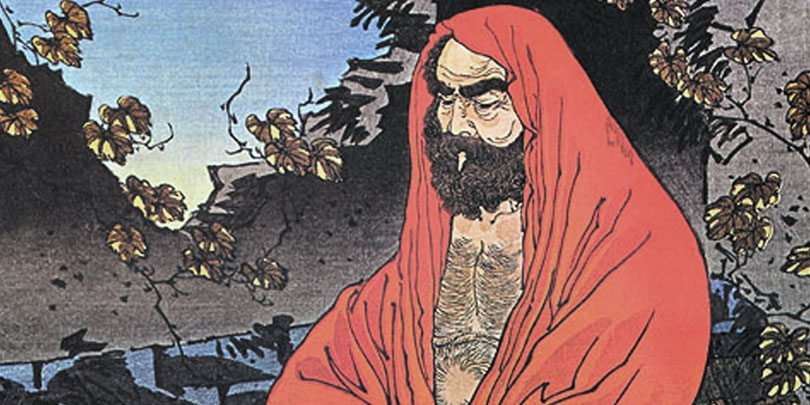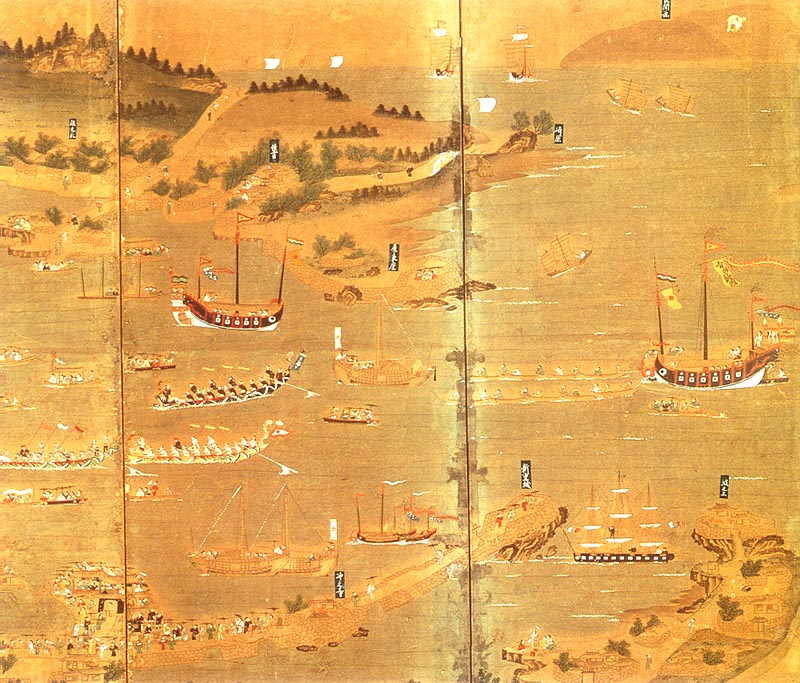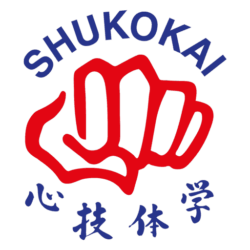The exact origins of Karate are obscured by the mists of time and the tracing of those beginnings is complicated by a lack of reliable written records from either Japan or Okinawa. This lack of written “proof” for the origins of this, the most important of Japanese cultural exports, is largely due to the horrendous damage to property suffered in Okinawa at the end of the Second World War. There is, however, no doubt that the history of Karate can be reliably traced back to the beginning of the nineteenth century and a rich oral tradition existing on Okinawa, can help us fill in the gaps. According to tradition, karate can be traced back to China and the famous Shaolin Temple via Okinawa.

The Shaolin Temple, built in around AD 495, and situated in the Hunan Province of central China, has been the spiritual home of the hard schools of Martial Arts since the arrival of an Indian monk by the name of Bodhidharma (Dharuma to the Japanese) in about the sixth century AD. It has also been fundamental to the development of a sect of Buddhism called Zen. Although there is a great deal of doubt regarding the story of Bodhidharma, and his introduction of the fundamental exercises believed to be the basis of the fighting system Shaolin ch’uan fa, there is no doubt that the Chinese hard and soft schools of combat have contributed greatly to the development of fighting systems throughout Asia. In about the 6th century AD the monk Bodhidharma traveled from India to central China, teaching a form of meditative Buddhism called Ch’an by the Chinese and Zen by the Japanese. Legend tells us that he taught a series of exercises to the monks at the Shaolin Temple, to help them overcome the rigors of their secular life. These exercises became the foundation of a fighting system (Shaolin Temple boxing) that was to influence the other indigenous systems of combat in China and ultimately the fighting system of Okinawa, Te.
Okinawa, a melting pot of the customs, traditions and values of its two powerful and influential neighbours, Japan and China, is the main island of a chain known as the Ryukyu Islands. Linking Japan and China they have been ruled or influenced by one or the other of its neighbours, for a thousand years. Originally a very primitive cultural environment its geological position ensured that it was of immense strategic importance to its neighbours. As a consequence, in about 1300, Okinawa became a vassal state of China. This relationship ensured a steady cultural and technological exchange over several centuries, leading to the gradual sophistication of the Okinawan way of life. In the late thirteenth century Buddhism was introduced from Japan. This created a society with a strong martial tradition of its own being influenced by two very different, but very advanced, martial arts systems. After the establishment of the Sho dynasty in Okinawa, when the nation for the first time became united under one king, there was a shift away from the primary industries of the past and trading and commerce became the first concern of the Okinawan people. The merchants and sailors visited not only Japan and China but all the major commercial centres of SE Asia, where they came into contact with many of the fighting systems of the region, a factor greatly influencing the development of Okinawan Te.

In 1609 Japan invaded Okinawa and the Ryukyu Islands have been a part of Japan ever since.Te, (meaning, literally, the martial art of the Hand) is thought to have developed on Okinawa for over a thousand years. The Karate as we know it today, is the result of a dynamic synthesis and fusion of Okinawan Te and the hard Chinese art of Shaolin Temple boxing. There has also been a great influence, apparent in some schools more than others, of the soft (or internal) schools of Chinese boxing as taught in southern China and, of course, over the last hundred years there has been a great Japanese influence, very apparent in the grading system as used by most major styles. The major Japanese influence, however, has been the transition from Karate-jutsu to Karate-Do, a transition that has taken the classical Japanese martial arts, including Karate, from their feudal form into a format acceptable and applicable to the twentieth century.
Whilst Te developed into a fighting system throughout the Ryukyu archipelago there were three very definite major areas of influence. These areas were the capital city Shuri, the port of Naha and the satellite city of Tomari. Thus the system became stylised on a regional basis being recognised as Shuri-Te, Naha-Te and Tomari-Te. Although differences between the systems did exist, it should be realised that the three towns were only a few miles apart, and with a constant inter-reaction taking place, there were probably far more similarities than differences. Many of the differences probably existed due to the differing influence of the Chinese. The practitioners of Shuri-Te, being largely court nobility, were often subject to teaching from diplomats and high ranking military men, such as the Chinese envoy Kushanku (believed to be the original teacher of the Kushanku group of Kata), whereas the people of Naha were largely influenced by merchants or seamen, or their own merchant or sailor martial artists who returned from journeys to other areas. It is interesting that the Chinese Emperors court, the major influence on Shuri-Te (eventually Shotokan in Japan), was largely Bhuddist or Confucian in persuasion (origins at the Shaolin Temple and hard style martial arts) whereas the Naha-Te (eventually Goju) is clearly influenced by the softer Taoist internal arts of southern China.
Around 1480 the Okinawan King Sho Chin, having much trouble controlling the nobility of the day, passed the now famous edicts prohibiting the carrying of weapons. These regulations were to remain in force until the Japanese occupation in 1609. The Japanese Shogun continued the practice of not allowing the carrying of weapons for the Okinawans, but the same prohibition did not apply to the Japanese samurai of the occupation forces. As a result the Okinawan nobility pursued and developed the art of Te. A note of interest is that the Kobujutsu arts (traditional weapon systems of Okinawa) were largely developed by the peasants and fishermen. During the nineteenth century the influence of the Chinese was so strong that Te became known as T’ang-Te or China Hand. It was to remain so until renamed Kara-Te or Empty Hand at the beginning of the twentieth century.
